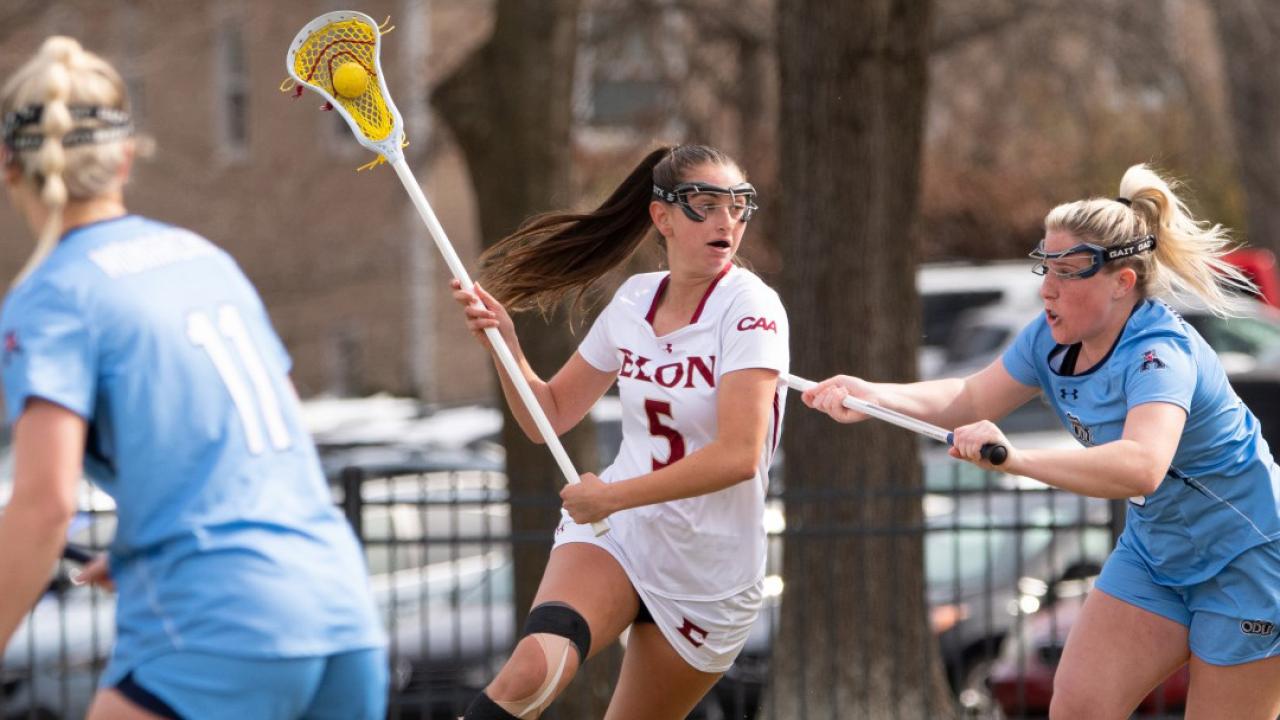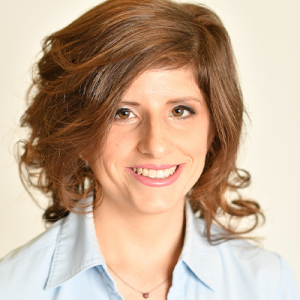
Sammy Fisher Triumphs for Late Friend, Other Marjory Stoneman Douglas Victims
This story contains graphic depictions that may be traumatizing to some audiences.
When Sammy Fisher steps onto the field, she always carries a lacrosse stick with an avocado sticker on it. She also carries the weight of an unimaginable tragedy that’s all too imaginable for too many children across the United States.
The avocado is for her friend, Joaquin Oliver, nicknamed “Guac.” Oliver was one of 17 people murdered when a shooter opened fire at Marjory Stoneman Douglas High School in Parkland, Fla., on Feb. 14, 2018.
Fisher and Oliver were in the same creative writing class during fourth period that day. Oliver recalled an “abnormally normal” day, save for a fire drill that morning. They were making Valentine’s Day cards for someone special — Fisher chose her mom — when Oliver came over to say hi.
“He came up to me and told me he had gone to watch my first varsity basketball game a few days prior,” Fisher said. “I was so surprised. I was like, ‘Wow, thank you. That means a lot to me.’ I’ve always had an issue feeling proud of myself — like I belonged on the field. He said he was proud and that I was a great player, and I would do great things.”
The compliment meant something coming from Oliver, a basketball player himself who played with Fisher’s brother, Matt. Fisher’s father, Mitch, was their coach. He let her know he’d be at the game that Sunday.
Shortly after, the students began hearing loud noises.
“We thought it was fireworks at first,” Fisher said. “We were so confused. We didn’t know what was going on. My teacher paused the music. We were all silent. My teacher guessed it was a computer cart. We were like, ‘We don’t need to worry.’ No one knew what a gunshot sounded like in person.”
Then, a fire alarm went off — but there had already been a drill. Something was up, but they didn’t understand the magnitude. The confusion shifted to the hallway, where a sea of students tried to escape a three-story building they believed to be safe.
“Everyone is outside, and a teacher yelled for everyone to get back in their rooms,” Fisher said. “We were all so confused.”
There were typically 25-30 kids in the classroom. Ten made it back inside, including Fisher — the last person in before her teacher, Stacey Lippel, held the door shut with her body because the door lock was broken. The rest scattered. Two would die. Fisher held a friend’s hand and hid behind a filing cabinet as the shooter shot through the glass.
“Glass was everywhere,” Fisher said. “He actually grazed Mrs. Lippel’s arm. As he walked away, she came to the back of the classroom with us and crouched down to hide.”
Instead of finishing a Valentine’s Day card for her mother, Fisher texted her. She also sent messages to her brother and father.
“We believed it was fake,” Fisher said. “The whole week, the school was talking about doing an active shooter drill. I was almost in denial.”
Suddenly, a red laser pointed into the classroom.
“I thought I was done,” Fisher said.
Thankfully, it was the SWAT team. They took them on a detour to avoid a stairwell where Meadow Pollack, one of Fisher’s classmates, lay dead. It was a well-meaning move but not one that could shield Fisher and her classmates from the mass murder that just happened. They walked by a teacher, Scott Beigel, and a body near the bathroom that Fisher later learned was Oliver’s. He had likely tried to hide in there, but Marjory Stoneman Douglas locked bathroom doors to prevent students from smoking inside.
Nothing made sense.
“I walked out of the building, saw my mom, and we went home,” Fisher said. “That’s when all the information came pouring out that it was real and not fake.”
The weeks that followed certainly didn’t feel real. The news cameras camped outside of the school. Televised town halls drew appearances from the likes of Florida senator Marco Rubio. Many students Fisher saw daily became nationally recognized names and activists against gun violence overnight.
“It’s not just complete strangers on television,” Fisher said. “They were in my class. My brother was friends with them. It’s so surreal that we were put on the map for an unfortunate reason.”
The students were commended for being well-spoken and resilient. But the truth of the matter is that they were not OK. Fisher, a freshman at the time, had three-and-a-half years left.
“None of us wanted to go back to school,” Fisher said. “All of us wanted to transfer. We knew we had to graduate. We had to be that last class.”
That spring, Fisher picked up a lacrosse stick. Sports had always been important to her, and she played several — flag football, soccer, track and, of course, basketball. But lacrosse became healing.
“The team I was on at the time, we all just rallied together,” Fisher said. “It felt like a family. It was the only normal thing that could come out of this. It helped me realize I have a place. I got that second chance to do something worthy. Lacrosse really helped fuel my motivation that Joaquin gave me when he told me he was proud of me.”
But not even lacrosse could erase what happened.
“It’s been exhausting,” Fisher said. “I hate going to school now, which is so unfortunate, but I am terrified to sit in a place where there are chairs and desks modeling a classroom. It’s about managing the fear and learning how to live with it and not letting it consume you.”
Part of healing — and not hiding — means being open about her experience with her new family at Elon.
“Once I got to Elon and saw they really welcomed me on the team, and I had a place here, it made me want to share my story and inspire people to not let their lives stop when they go through something hard,” Fisher said. “For me, sharing my story is my way of keeping Joaquin’s spirit alive and the way he helped motivate me to play lacrosse.”
Fisher made 13 starts and scored 20 goals as a freshman, earning a place on the CAA All-Rookie team. But the beginning of her sophomore season — like any season — meant the anniversary of the shooting and her friend’s death.
“It’s not just that day that is hard but the time surrounding it. It really makes me think about it,” Fisher said.
On February 14 ahead of Elon’s game against Queens the next day, Fisher opened up to her coaches.
“I was talking to my coaches about it, and I was nervous about playing the next day,” Fisher said. “They had the idea of maybe wearing green ribbons in honor of Joaquin’s memory because his nickname was Guac. We were talking about that as a way to honor him and help me play instead of being sad during that time.”
The Phoenix wore green ribbons in their hair and on their backpacks, and the public address announcer shared a bit about Oliver, the anniversary and why the team was wearing green ribbons.
“It meant the world,” Fisher said. “I can’t say anything less. They are my sisters. They are my family. For them to not hesitate in being there for me and dedicate that game to him was amazing.”
When the game began, Fisher was amazing. The player who struggled to feel like she fit in, who walks around hearing the words of her friend telling her that she would do great things, didn’t just belong on the field. She stood out. Fisher tied a career high with four goals and matched Elon’s program record of 12 draw controls in a 13-9 win.
“I kept repeating to myself, ‘He’s proud of me. He told me I can do this,’” Fisher said. “I used his words to motivate me. I knew once I scored that first goal that he knew I could do more. I used that motivation to fuel me. I knew he was with me that whole game. I hope he knows he’s had an impact on my life and so many lives and that I am using that impact to inspire others.”
Nothing will bring Oliver, Pollack or any of the 17 people who died at Marjory Stoneman Douglas back. But little by little, and with a little help from her teammates and Oliver’s memory, Fisher is putting one foot in front of the other, persevering in the face of her fears with every step.
“We can’t let fear rule our lives,” Fisher said. “Life is way too short to take it too seriously. You never know when your first or second chance is going to be ended, really living, not worrying about the little things.”
Beth Ann Mayer
Beth Ann Mayer is a Long Island-based writer. She joined USA Lacrosse in 2022 after freelancing for Inside Lacrosse for five years. She first began covering the game as a student at Syracuse. When she's not writing, you can find her wrangling her husband, two children and surplus of pets.

Related Articles





